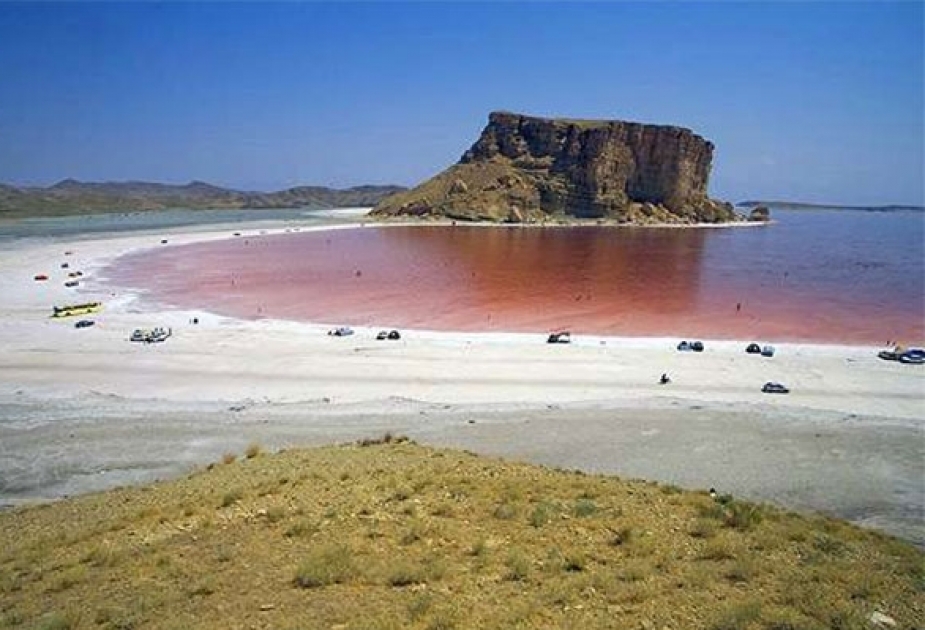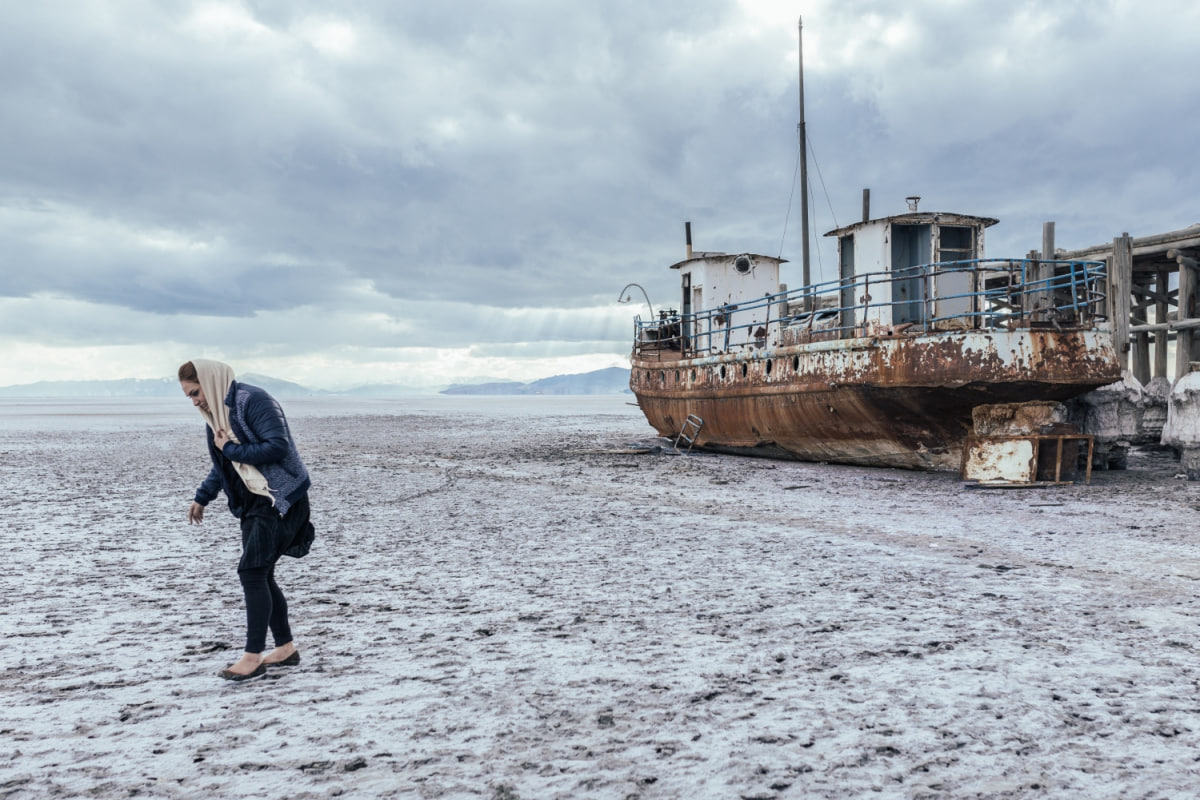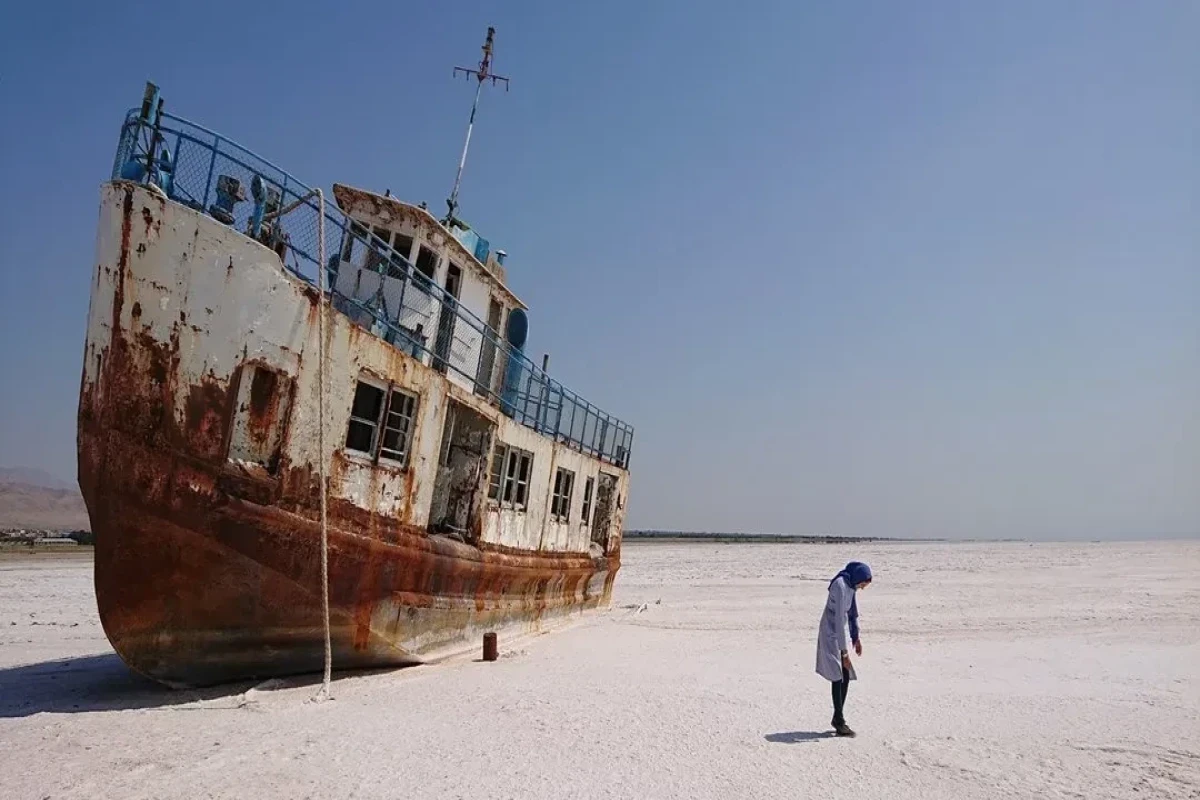APA presents the second article dedicated to the drying up of Lake Urmia by Mohammad Rahmanifar as part of the "Know South Azerbaijan" project.
Khoy city: An impregnable fortress of Azerbaijanism and freedom trench
URMIA: Beating heart of Azerbaijanism
How does the Tehran regime Persianize Turkish toponyms in South Azerbaijan?
Azerbaijani saz wrapped in an American flag and thrown into a fire in Tabriz
One of the prominent historical places in South Azerbaijan -Sheheryeri
Urmia Lake: The bleeding wound of South Azerbaijan
In the previous article, we explained the deliberate drying of Lake Urmia by the Islamic Republic of Iran and the numerous protests of the South Azerbaijani Turks against this policy. In this article, we want to examine the issue from another angle. Naturally, the statement "the Iranian regime is deliberately drying up Lake Urmia" may raise questions such as "Why would a government do such a thing within its own borders?! What is the benefit of the drying up of Lake Urmia and the destruction of the environment to this government?!"
In our opinion, before these questions, it is necessary to answer the question of what consequences the drying up of Lake Urmia can bring. To put it more clearly, we will talk about the impact of the drying of Lake Urmia on the lives of the residents around the lake, that is, the Turks of South Azerbaijan.
Harmful consequences of drying up Lake Urmia
A number of studies have been conducted in universities and science centers around the world, especially in Iran and Türkiye, regarding the harmful effects of the drying up of Lake Urmia. The results of these studies, published in the form of university student theses or scientific articles, show that the drying up of this lake will have irreparable harmful effects on the environment and the lives of millions of people — the Turks of South Azerbaijan. In many of the mentioned studies, it was stressed that the drying of the lake will lead to a large-scale and irretrievable ecological disaster.
The ecological consequences of the drying up of Lake Urmia will be an increase in the salinity of the lake water, the creation of 150 thousand hectares of saline soils, desertification and soil salinization, the drying up of water wells, the disappearance of agriculture and animal husbandry, the weakening of tourism in the region, the destruction of the life chain and its many biological features. In such a way that with the drying up of this lake and the 8 billion tons of salt coming out under it, as well as the beginning of salt storms, the lives of the local residents, as well as nature, education, health, factories, and industry will be damaged and destroyed. With strong and hot winds carrying salts, especially in summer and autumn, the quality soils of the region, as well as the fertile plains of Maragha, Bunab, and Tabriz in East Azerbaijan province, are heading towards salinization and desertification. As a result of all this, there will soon be no concept of farming in the region.

We should remember that more than 5 million South Azerbaijanis live in more than 36 cities and 3150 villages in the water basin of the lake. The main source of income and occupation of more than 60% of this population is agriculture and animal husbandry. Of course, those 5 million people live very close to Lake Urmia, and they will be the first to experience the harmful effects of its drying up. According to the results of scientific studies and even the statements of Iranian officials, the dangerous and harmful consequences of the drying up of Lake Urmia will affect all residents of South Azerbaijan.
We are talking about an 8-billion-ton salt bomb capable of wiping out life in the entire South Azerbaijan region. The 8 billion-ton salt bomb, which manifested itself in the form of salt storms a few years ago, will not only destroy the environment, agricultural fields, and villages but also cause incurable diseases — respiratory problems, and cancer of the esophagus, cardiovascular, kidney, skin diseases - through the heavy metals in salt. And rather, it has already caused. Note that the local population, especially the residents of neighboring villages of Lake Urmia, have been feeling the harmful effects of the drying up of this lake for years. Many villages are already deserted. Thus, until yesterday, many Turks of South Azerbaijan, who supported their livelihood by farming and raising cattle on their fertile land, are currently forced to beg for work on the streets of Tehran. In fact, this is exactly what the Tehran authorities want.

What is the purpose of the Tehran government to dry Lake Urmia?
As we mentioned, the drying up of Lake Urmia will force at least 5 million South Azerbaijanis to move from their homes, and this disheartening issue is already showing itself over time. On the other hand, again, according to Iranian officials, the people affected by the drying up of Lake Urmia are not only this group of 5 million people, but all South Azerbaijani Turks. That means, with the drying up of this lake, or rather the lake being drained, life will be in danger in the entire South Azerbaijan region.
In fact, the draining of Lake Urmia was the last step of the policies that started against the Turks of South Azerbaijan during the reign of Reza Shah (1925-1941) in Iran and continued for a hundred years. During all this time, the Iranian government put economic, social and political pressure on Azerbaijani Turks and forced them to move to Persian regions. The fact is that the central government of Iran has been somewhat successful in implementing this policy. During this century, a large part of Azerbaijani Turks migrated to Persian regions due to livelihood, economic, social and political problems, and in most cases, their second and third generations completely forgot their Azerbaijani and Turkic identities. Today a lot of painful words such as "My parents are Turkic, but I am not!" can be heard in Persian cities.
The central government of Iran, which considers the Turks of South Azerbaijan as the biggest enemy of the Persian regime in Iran and is always afraid of them, began to weaken the Turks of South Azerbaijan in different ways since before a hundred years ago. On the one hand, Iran tried to assimilate them, to destroy their language, culture and history, and on the other hand, she aimed to drive them away from their lands where they have lived for thousands of years. As we emphasized above, the goal of this inhumane policy is to erase the historical memory of the South Azerbaijani Turks after one or two generations by transferring them to the regions where the Persians live, and dissolving and destroying them in the form of Persianism and even in the form of Persianism ideology. The second goal is to reduce the number of Turks in the South Azerbaijan region and thus weaken the strength or intensity of the threat that will come from South Azerbaijan. Until the end of the Qajar period (1925), the city of Tabriz, which was the most densely populated and had the most society in Iran, had less influence not only than Tehran but also Mashhad and Isfahan, even Shiraz and Kirman, as a result of the above-mentioned policy. The topic of discussion is not only the city of Tabriz, but the cities of South Azerbaijan, which were considered the most densely populated cities in Iran until the last years of the Qajar period, including cities such as Khoy, Urmia, Ardabil, and Maragha, today are lagging behind many Persian cities from a general point of view. It means that the governments of Iran in the last century have been successful to a certain extent in reducing the society of the South Azerbaijan region.

When we take into account the political developments in the region, the drying up of Lake Urmia is not only forcing the Turks of South Azerbaijan to move, but it is acquiring larger regional and even international dimensions. When we observe the media speeches of the gangs that are extensions of the PKK terrorist organization and operate in the west of South Azerbaijan, we see that they are determined to separate the Turks of South Azerbaijan in the region from Türkiye and even to some extent from Azerbaijan. The aim is, without a doubt, to create a terrorist corridor in the northwest of South Azerbaijan, that is, on the eastern borders of Türkiye and the southern borders of Azerbaijan, to eliminate the land connection and border of the countries in question and separate them from each other. In recent years, one of the main issues is that terrorist groups spread wide propaganda about this issue, and the Persian media covertly supports this situation, that is, the land claims over the territory of South Azerbaijan!
Sending a Kurdish governor to West Azerbaijan Province for the first time since the Iranian Islamic Revolution is considered to be a purposeful move. The fact that Iranian officials sometimes welcome the officials of the local government in the north of Iraq not in the Kurdistan province of Iran, but in the West Azerbaijan province, and hosting them in the city of Urmia is also considered a significant act. All these demonstrate that in the hidden dimension of Iranian government policy, there is a certain degree of consensus and even cooperation with the groups eyeing the lands of South Azerbaijan.
The ultimate goal of draining Lake Urmia
Now let's try to put the pieces of this puzzle together. In the first stage, the last part of the policy that started in the last century, with the drying of Lake Urmia, as Iranian officials have said, South Azerbaijani Turks will be forced to move from their homeland en masse. After one or two generations, they will dissolve into the Persians. In the second stage, the western region of South Azerbaijan will be Kurdized in the direction of the policy that started recently (West Azerbaijan province will suffer less damage from the drying of Lake Urmia compared to East Azerbaijan province and will not completely lose living opportunities like East Azerbaijan province. One of the reasons for this is that the winds in the region blow from east to west). As in the last 50 years, we are witnessing a serious development in this regard, and as a result of the policy of the Iranian government, we are seeing the settlement of Kurds from other regions and even from the north of Iraq. As a result of these unnatural settlements, demographic changes are taking place in this region. In the last stage, using the results of this demographic change as an excuse, the members of the PKK terrorist group will intervene and claim that the region does not belong to the South Azerbaijani Turks, and this time they will want to make us experience the pain we experienced in Garabagh about 30 years ago, in South Azerbaijan. The project we reveal here is neither an illusion of conspiracy nor a top-secret and mysterious adventure. When we watch Persian and Kurdish media, we witness propaganda about this project openly or secretly.
_1693305690.png)
It is for this reason that no other nation except the Turks of South Azerbaijan opposes the draining of Lake Urmia. We have even seen many times that some local Kurdish government officials and Kurdish representatives in the Iranian parliament openly declared their opposition to the allocation of financial resources for the restoration of Lake Urmia.


